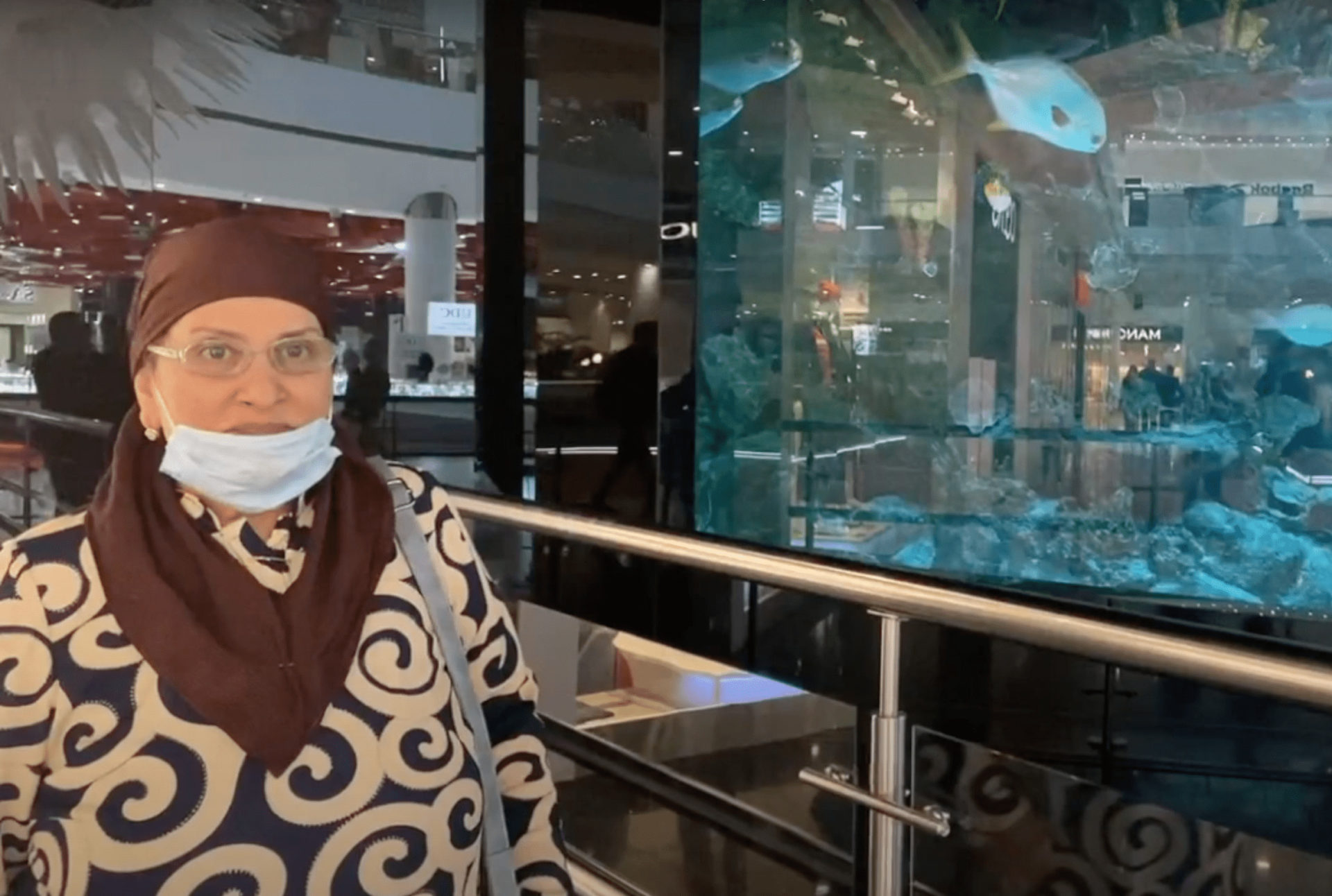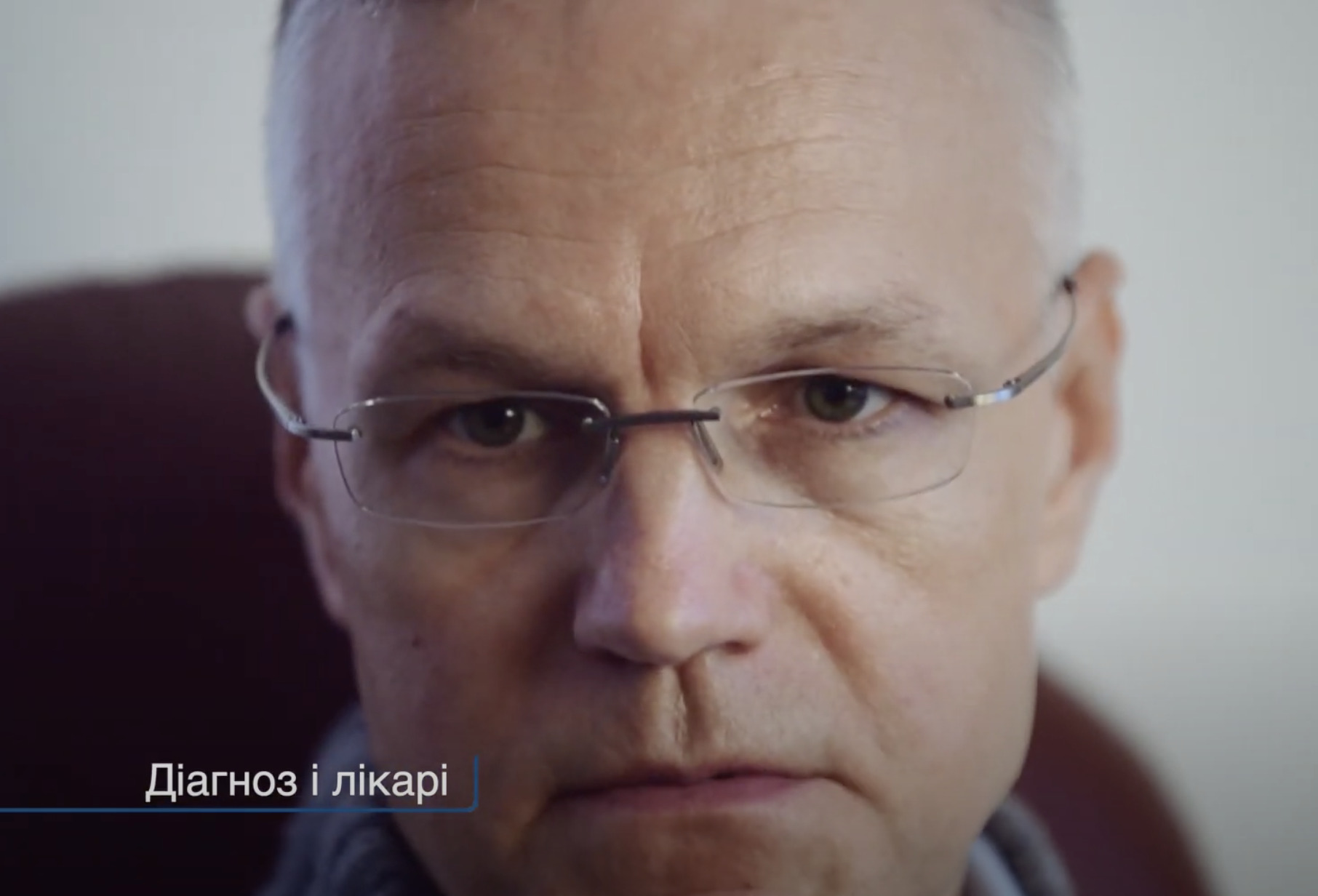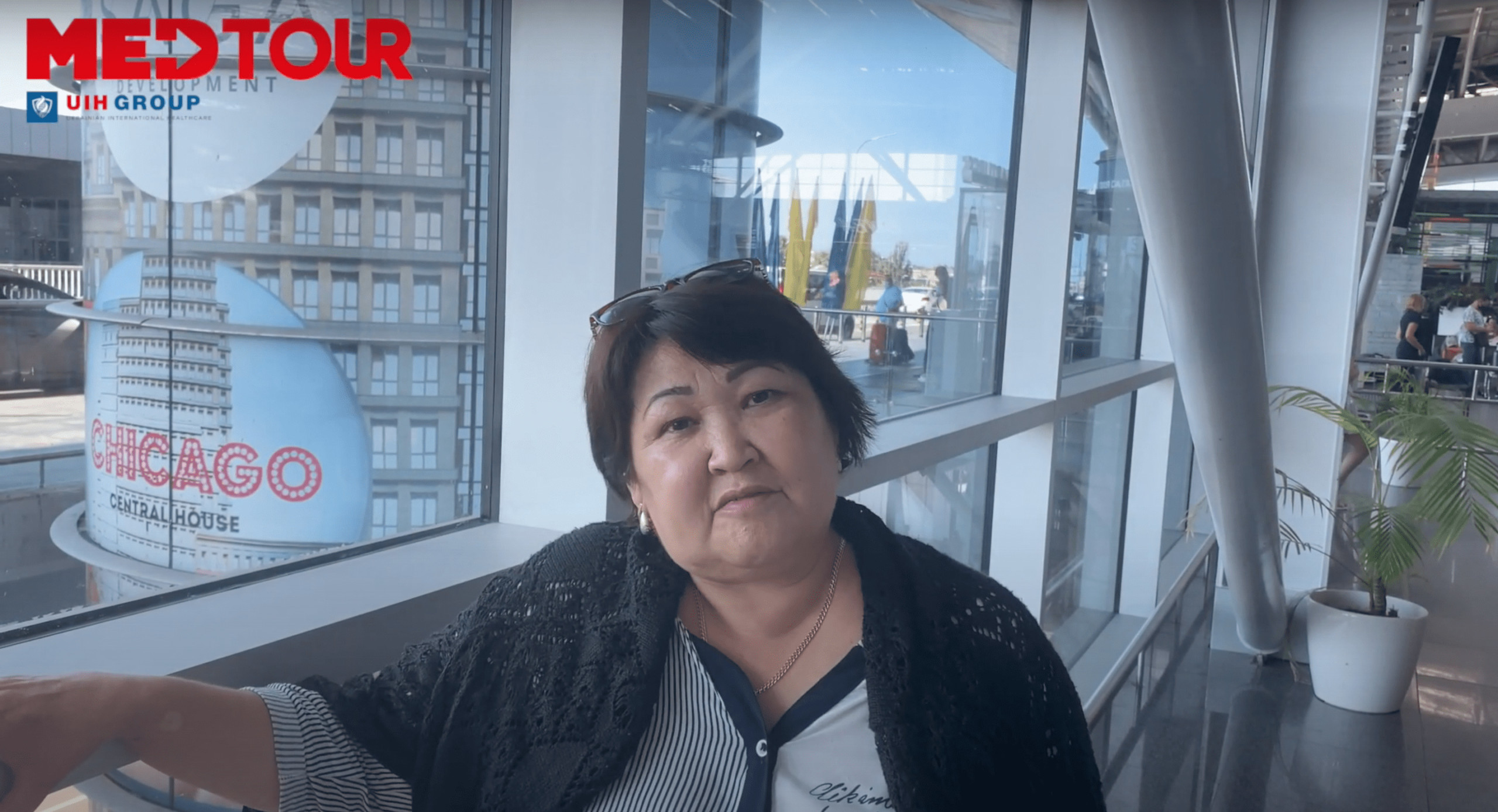-
 News
Home washing machines fail to remove dangerous germs from textiles
News
Home washing machines fail to remove dangerous germs from textiles
-
 News
Egg white hydrolysates may become natural antihypertensives
News
Egg white hydrolysates may become natural antihypertensives
-
 News
Food companies are looking to replace artificial colors with natural alternatives
News
Food companies are looking to replace artificial colors with natural alternatives
-
 News
The development of adult acne increases the risk of developing eating disorders
News
The development of adult acne increases the risk of developing eating disorders
-
 News
Widespread access to telemedicine increases the workload of family physicians
News
Widespread access to telemedicine increases the workload of family physicians
All news
Chronic myeloid leukemia treatment
Chronic myeloleukemia accounts for about 15% of all new cases of leukemia. The disease can be asymptomatic for a long time. This is why it is important to have a comprehensive screening program every year.
Chronic myelogenous leukemia most often occurs in adults. The average age of patients is about 63 years. Despite the extremely rare occurrence of CML in young patients, treatment protocols are the same for adults and children.
MedTour patients recommend clinics for the treatment of chronic myeloid leukemia:
Doctors for the treatment of chronic myeloid leukemia
Frequently Asked Questions
It is a cancerous disease that occurs in the bone marrow. Chronic Myeloid Leukemia occurs in the precursor cells of red blood cells, platelets, and leukocytes – the myeloid cells.
As a consequence of the genetic abnormality, the blood cells begin to divide uncontrollably and do not reach their full “adult” stage, which makes them unable to perform their functions.
Since cancer cells have a longer life cycle, they begin to displace healthy blood cells and accumulate in organs such as the spleen.
Unlike acute leukemia, CML can be asymptomatic for long periods of time without being noticed. However, it is important to understand that chronic leukemia is more difficult to treat.
Risk factors increase a person’s chances of getting a disease. However, even if a person has several factors at the same time, the occurrence of the disease is not guaranteed.
Risk factors for chronic myeloblastic leukemia include:
- Exposure to high doses of radiation,
- Age of the patient, as it predominantly occurs after age 60,
- Gender. Most patients are male.
The main cause of Chronic myelogenous leukemia is mutations in the chromosomes. With each cell division, genetic material is copied. During this process, various abnormalities can occur, which leads to the development of CML.
Each human cell contains 23 pairs of chromosomes. Over the past few years, scientists have been able to determine that patients with chronic myeloleukemia have abnormal replacement of some of the genetic material between chromosomes 22 and 9.
The change in the chromosomes leads to the formation of a new BCR-ABL oncogene, which is responsible for the production of a tyrosine kinase-type protein. This protein causes chronic myeloleukemia cells to grow and divide out of control.
Depending on the stage and severity of leukemia, treatment may involve an oncohematologist, chemotherapist, radiologist, and oncologic surgeon, as well as specialists from other specialties.
Multidisciplinary approach to treatment of oncohematological patients is widespread in foreign medical centers. It presupposes a weekly discussion of further treatment tactics among doctors.
This makes it possible to achieve the best possible result and reduces the influence of the human factor.
Signs and symptoms of CML are not specific, i.e., they can also be seen in other cancers and diseases of the non-oncological spectrum. These include:
- General weakness and malaise,
- Fatigue even after minor exertion,
- Weight loss,
- Increased sweating at night,
- Increased body temperature,
- Bone pain due to spread of tumor cells,
- Enlargement of the spleen,
- Feeling of fullness after eating a small amount of food.
Most symptoms of chronic myeloleukemia are related to changes in blood composition: a decrease in the number of normal red blood cells, platelets, and leukocytes.
As a consequence, patients feel weak, are more prone to bacterial infections, and may notice frequent and severe bleeding from the mouth and nose.
CML is treated in a specialized oncohematology department. It is important for the clinic to have its own laboratory to perform cytogenetic and immunohistochemical studies. These important tests help doctors determine the form and subtype of leukemia, which determines the future prognosis and treatment tactics.
Also, specially equipped rooms for the stay of patients after bone marrow transplantation are a necessary requirement.
Bone marrow transplantation wards should have self-contained air circulation and purification, since with compromised immunity the chances of contracting infectious diseases are much higher.
Medical centers that meet all international standards can be found in Germany, Turkey, Israel, Spain, Italy and Korea. To get more information, leave an application on MedTour platform.
The final cost of diagnosis is determined in each case individually, depending on the degree and severity of the disease, the qualifications of the doctor and the level of the medical center where the patient is examined.
The average cost of diagnostics by country:
- Turkey – $3500,
- Germany – $5000,
- Israel – $6000,
- India – $2,500,
- Korea-$5000.
Most often, chronic myeloleukemia is detected by chance, during laboratory tests prescribed by the doctor to detect other changes not related to leukemia.
The following tests may be ordered to diagnose CML:
- General and biochemical blood tests,
- Genetic tests,
- Bone marrow biopsy,
- Radiological methods of investigation: MRI, CT scan, and ultrasonography.
Foreign medical centers use such methods of treatment for chronic myeloid leukemia:
- Chemotherapy,
- Targeted therapy (targeted drugs),
- Radiation therapy,
- Surgical treatment (spleen removal),
- Treatment with interferon drugs,
- Bone marrow transplantation.
To undergo diagnosis and treatment of chronic myeloleukemia in a foreign clinic, leave an application on the MedTour platform.
An experienced medical coordinator will contact you and advise you on all questions.
MedTour platform helps patients to get an advance reply from the clinic, make an appointment with the doctor, book flights and apartments near the clinic.
Our services are free for all patients. You pay for treatment and diagnostics directly at the clinic, according to the procedures performed.
Modern methods of diagnosis and treatment of chronic myeloblastic leukemia (2021)
How is chronic myeloleukemia diagnosed in foreign clinics?
Laboratory blood tests
During a general blood test diagnosis, the patient’s red blood cell, platelet, and white blood cell levels are looked at. Usually, patients with chronic myeloleukemia have abnormally high levels of immature forms of white blood cells. These juvenile forms are called myeloblasts or simply, blast cells.
Occasionally, patients may have low levels of red blood cells and platelets. Since this laboratory picture is not specific for CML, additional tests are performed. For example, bone marrow cell analysis.
Bone marrow biopsy
Bone marrow samples taken during aspiration check the ratio of blood-forming cells to fat cells. In the bone marrow of patients with chronic myeloleukemia, the proportions are distorted in favor of hematopoietic cells. In such cases, we speak of a hypercellular variant of the bone marrow
Biochemical blood test
Blood chemistry does not provide information about whether a person has more CML. However, based on the results of this test, doctors can detect liver and kidney problems.
Complete information about the patient’s condition makes it possible to prescribe an adequate therapy plan, adjust chemotherapy already prescribed, or other treatments.
Genetic tests
The development of chronic myeloblastic leukemia is known to be associated with the presence of the Philadelphia chromosome and the BCR-ABL oncogene, which is responsible for the production of the protein of the same name.
Various genetic tests are performed to detect these abnormalities:
Cytogenetic testing
To perform the test, a blood sample is taken from the patient and then grown in the lab, until the cell division phase occurs. This is when the Philadelphia chromosome phenomenon is best observed.
FISH study
This study uses special dyes that attach and illuminate certain parts of genes. In the case of CML, the dyes are fixed on parts of the BCR-ABL oncogene.
The advantage of this test is the speed at which it can be performed, since there is no need to grow blood cells in a laboratory. The patient’s blood or bone marrow samples are suitable for the test.
Polymerase Chain Reaction (PCR)
This highly accurate method can determine the amount of the BCR-ABL gene in cells as well as all of its existing copies. PCR is effective in cases where the oncogene was not detected during cytogenetic testing.
Radiologic imaging techniques
Blood and bone marrow samples play a major role in the diagnosis of CML. However, in some cases, doctors may perform studies such as MRI, CT scan, or ultrasound.
Most often, these are required to evaluate lymph nodes and organs, mainly the spleen. MRI is used to visualize the brain and spinal cord to make a differential diagnosis of CML with other diseases.
How are chronic myeloblastic leukemia treated abroad?
Targeted therapy
In chronic myeloleukemia (CML), cells contain the abnormal BCR-ABL gene. The oncogene is responsible for creating the BCR-ABL protein of the same name, which causes blood cells to grow and multiply without control.
To suppress the protein’s activity, doctors prescribe special drugs known as tyrosine kinase inhibitors (TKIs), which directly target the pathogenic proteins in tumor cells.
This is why this treatment is called targeted therapy or targeted therapy. To treat CML, the doctor may prescribe one of the following drugs:
- Imatinib (Gleevec),
- Dasatinib (Sprycel),
- Nilotinib (Tasigna),
- Bosutinib (Bosulif),
- Ponatinib (Iclusig).
Interferon therapy
Interferon is normally produced by the human immune system to inhibit the growth and reproduction of tumor cells. Previously, this treatment was considered most effective for chronic myeloleukemia, before the advent of targeted therapy.
In modern medical practice, the use of Interferon-alpha is adjunctive and is used in conjunction with the administration of other medications.
Chemotherapy
Cytostatic therapy, or chemotherapy, unlike targeted drugs, affects the entire cell, causing its death. The use of chemotherapy has moved into the background with the advent of targeted therapies.
However, the doctor may prescribe chemotherapy before a bone marrow transplant. This treatment is effective in reducing the absolute number of cancer cells in the blood and bone marrow. Hydroxyurea, Cytarbine, Cyclovosfamide, and Vincristine are used in the treatment of chronic myeloleukemia.
Radiation therapy
Doctors rarely use radiation as a treatment for patients with CML. However, radiation therapy can reduce pain in patients with bone lesions or an enlarged spleen that squeezes nearby organs.
Surgical treatment
Tumor cells in chronic myeloleukemia spread throughout the bone marrow and can affect organs, so surgical treatment will not benefit the patient.
If the tumor has spread to the spleen, causing it to enlarge significantly, and chemotherapy and radiation therapy have not reduced it, doctors perform a splenectomy to remove the spleen.
Splenectomy does not affect the course of chronic myeloblastic leukemia, but improves the patient’s general condition.
Bone marrow transplantation (BMT)
A stem cell transplant is not the primary treatment for patients with CML. Doctors may recommend transplantation for younger patients because, in the case of chronic myeloleukemia, it is the only treatment with long-term remission.
Also, BMT can be performed if treatment with targeted therapy and chemotherapy does not produce the desired result and the overall condition of the patient does not improve
Published:
Updated:









